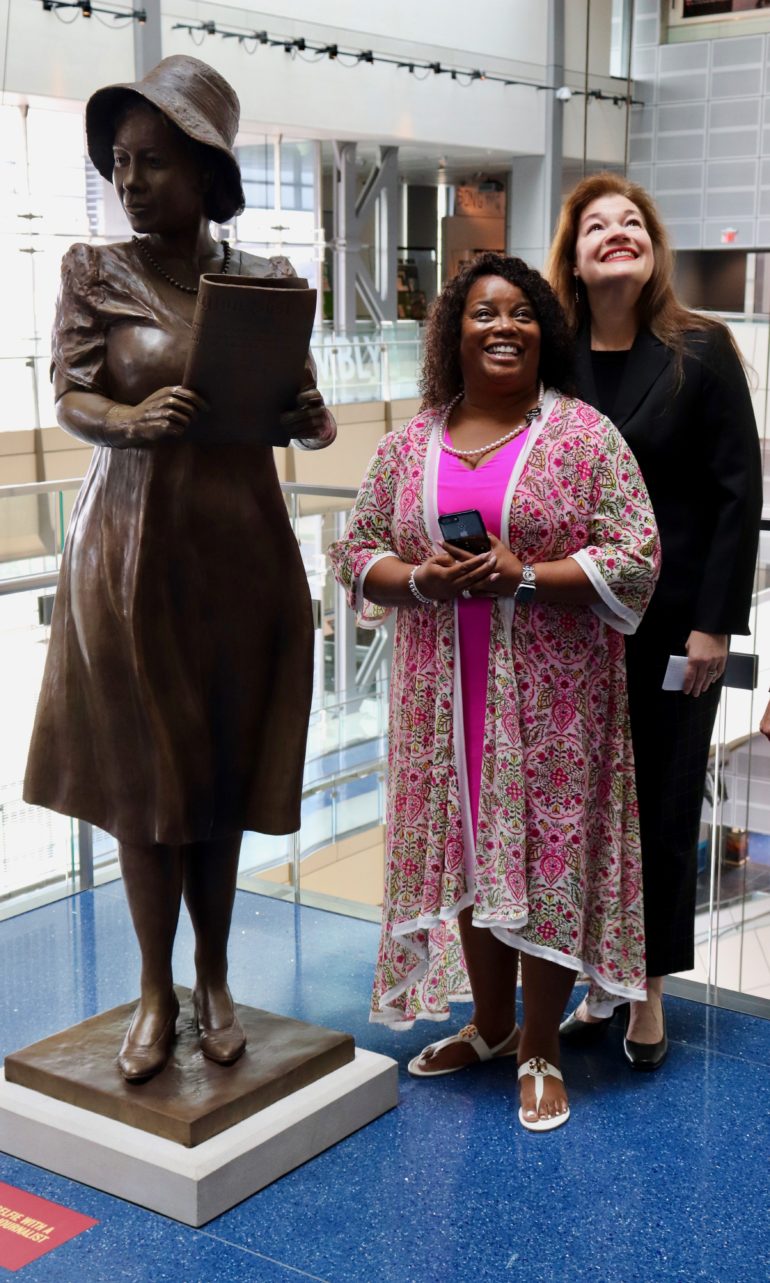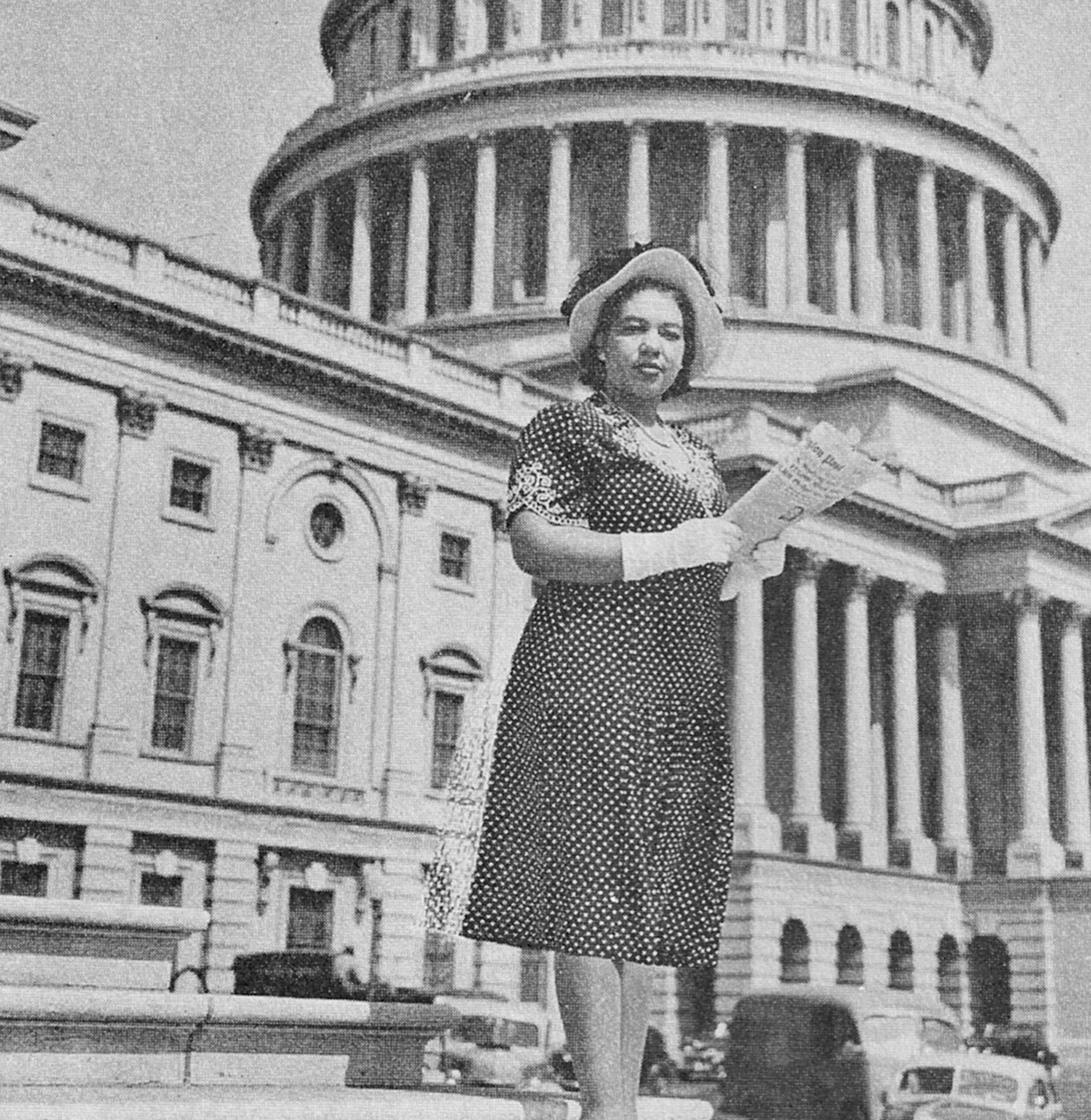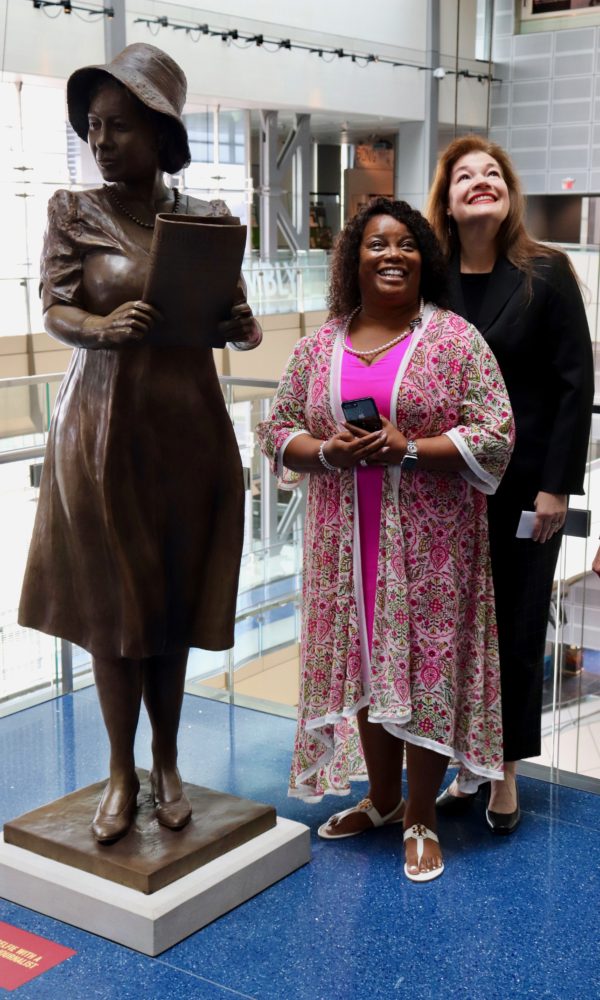WASHINGTON – Last month, the Newseum unveiled a statue of Alice Allison Dunnigan, the first African-American woman to receive press credentials to cover the White House. A few days later, Washington Post media reporter Paul Farhi published an article entitled “The White House press room is overwhelmingly white. Does that matter?”
Almost 70 years separate Alice Allison Dunnigan’s battle against racism and sexism from today. Yet African-American female reporters still represent a small part of the White House press corps.
And the few who manage to make it to their long-awaited destination, the White House’s James. S. Brady Press Briefing Room, still struggle with discrimination from within, as Brittany Shepherd underlined in her recent story for the Washingtonian.
“‘Good’ journalism in the Trump-era has become synonymous with access. But when you’re talking with people who view any hint of race as an on-ramp to identity politics, it’s almost impossible for a black reporter to gain their trust,” Shepherd wrote about her experience in the White House.
Shepherd goes on describing her skin color as “a barrier and assumption (her) non-minority colleagues aren’t required to face.” Dunnigan had to face the same barrier in the 1940s.
One might have thought that in 70 years, that barrier would have been broken down, but Shepherd’s article and the ratio of African-American women in the White House press corps (less than a dozen, among hundreds of journalists) indicate that it has not.
At the Sept. 21 debut of the Dunnigan statue at the Newseum, sculptor Amanda Matthews said that “Alice Dunnigan envisioned a future of equality and she dedicated her life to that vision.”
The present is not the future of equality Dunnigan had hoped and fought for.
There has been undeniable progress, but women of color remain a very small percentage of American newsrooms overall: 7.95 percent of newspaper staffs, 6.2 percent of local radio personnel and 12.6 percent of local television news operations, according to a study released earlier this year by the Women’s Media Center.
“Women are more than half the U.S. population, and people of color nearly 40 percent. But you wouldn’t know this from our media — because U.S. media does not look like, sound like, or reflect the diversity and experience of more than half the population,” center president Julie Burton wrote in the forward to the report.
The road to equality is still long, but remembering pioneer figures such as Dunnigan can be a source of inspiration on the way.
Right before the cloth was lifted from Dunnigan’s statue, her great niece Penny Allison Lockhart burst into tears: “I can’t wait until little boys and girls in schools to journalism students and everyone get to say ‘wow, let’s talk about Alice Allison Dunnigan today.’”
A look back at Alice Allison Dunnigan
WASHINGTON – In 1919, in Russellville, Kentucky, a 13-year-old girl was writing short news items for the Owensboro Enterprise, an African-American newspaper 75 miles away. Twenty-eight years later, in 1947, she became the first African-American woman to receive the title of White House correspondent.
Dunnigan was not destined to be a journalist. Her grandparents were slaves, her father worked as a tobacco sharecropper and her mother was a laundry worker.
But from a small town in Kentucky, she worked her way to the nation’s capital, taking journalism classes and writing for African-American newspapers while working as a teacher to provide for her family.
Dunnigan moved to Washington during World War II to work as a clerk at the National War Labor Board, freelancing for the American Negro Press (ANP) at the same time.
Her dedication led her to be appointed head of the Associated Negro Press Washington Bureau on Jan. 1, 1947. She was finally a full-time journalist, and kept writing stories for 14 years.
But even then, the fearless journalist had to keep fighting. She was banned from some events, regardless of her press pass; she had to sit with servants at a senator’s funeral, and she was paid half what her male colleagues were paid.
Dunnigan’s story is one of perseverance in a world hostile to African Americans and to women. She once said: “Race and sex were twin strikes against me. I’m not sure which was the hardest to break down.”
She fought against racism and sexism her entire life and career, and successfully became not only the first African-American woman to cover the presidency but also the first to be accredited to report on Congress, the Supreme Court and the State Department.
Dunnigan died on May 3rd, 1963, a year before the Civil Rights Act of 1964.
Her statue depicts her proudly standing, a newspaper in her hands. It is based on a 1947 picture of her in front of the United States Capitol.
Amanda Matthews, the sculptor from Louisville, Kentucky, said there is a “need for sculptures and monuments honoring women and minorities.”
“Our purpose for this project was to bring recognition to Alice Dunnigan’s contribution to our nation,” Matthews said at the unveiling ceremony.
The statue will be on display at the Newseum until Dec. 16. It will then be installed in Dunnigan’s hometown of Russellville, on the grounds of the West Kentucky African American Heritage Center as part of a park dedicated to the civil rights movement.














You must be logged in to post a comment.